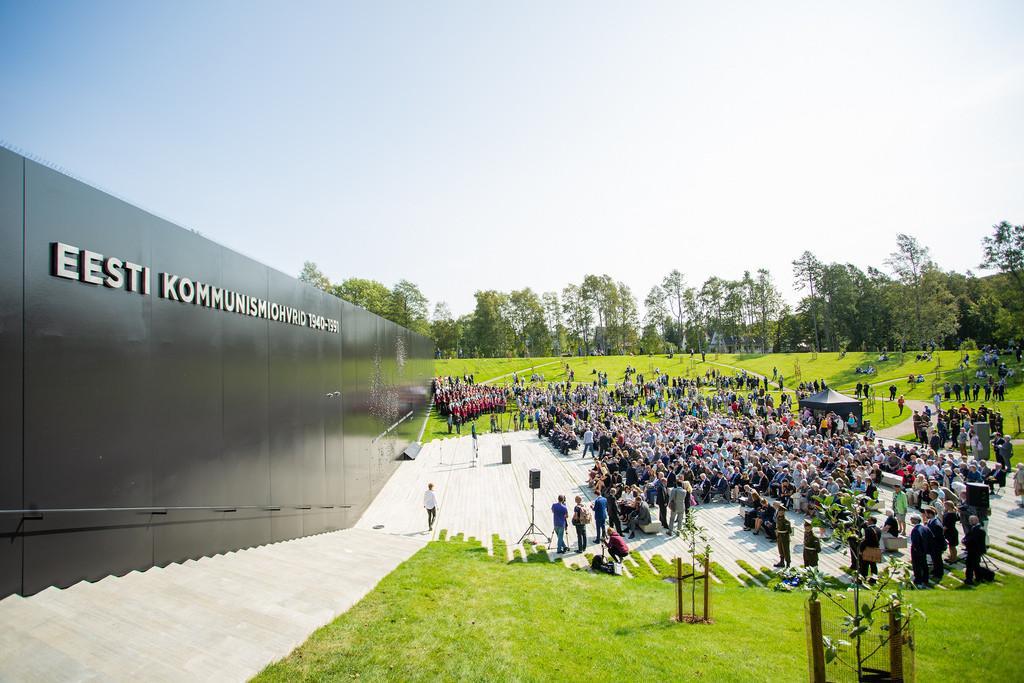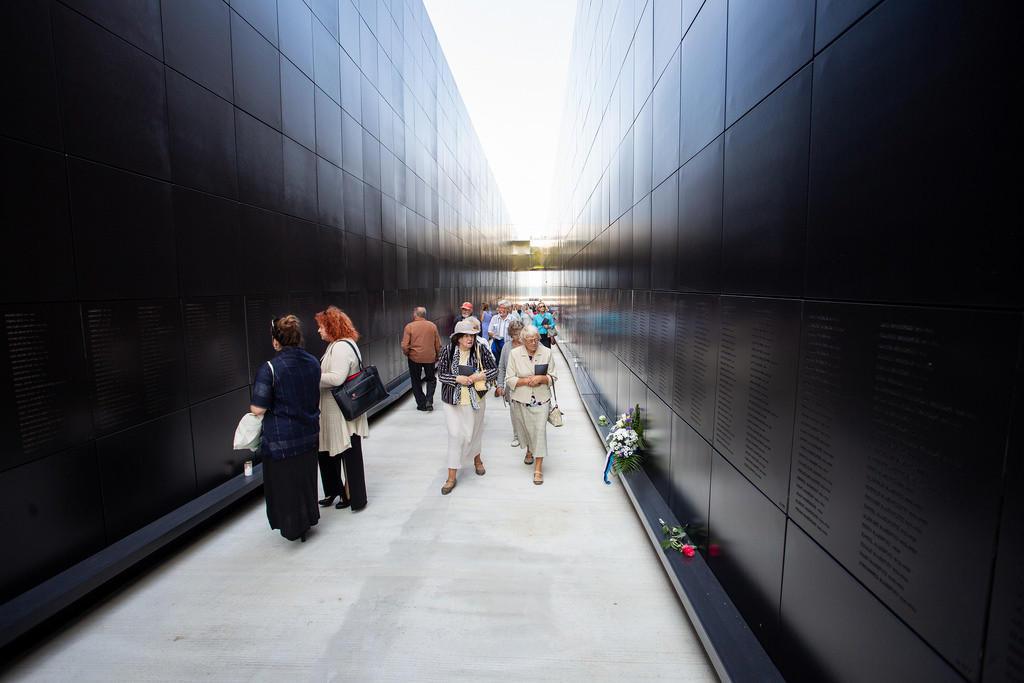A memorial to the victims of communism has been opened in the Estonian capital, Tallinn; the memorial is dedicated to all the people of Estonia who suffered under the terror inflicted by the Soviet Union.
The names of over 22,000 people who were murdered or who died due to inhuman living conditions in imprisonment or forced exile are inscribed on the memorial’s name plaques. A separate memorial wall is dedicated to military officers of Estonia who fell victim to the communist terror.
An impressive memorial in its scope and blended seamlessly within the surrounding environment, its design has already been compared to the Vietnam Veterans Memorial in Washington, DC.
“This site will be a permanent reminder of the fragility of freedom and human life and will appeal to the Estonian people of today and tomorrow to keep their home – free Estonia,” the Estonian Institute of Historical Memory, an NGO to maintain the memorial and its victims’ lists, said in a statement.
The memorial has two parts – called the “Journey” and the “Home Garden”. The “Journey” is a corridor of memory with the names of the victims on its walls. This corridor symbolises the mercilessness and hostility towards humanity of the totalitarian regime.
A park with apple trees and honeybees on the wall on the park side of the memorial conveys the tranquillity and security of the “Home Garden”. “People were taken away from home by force and they were forced to tread the path of suffering. Only some of them were able to survive those sufferings and return to the ‘Home Garden’,” the institute said.
Estonia lost one in every five people from its population of slightly over one million because of the Soviet Union’s terror policy. Today, the vast majority of them rest in unnamed graves without crosses. “May this memorial be the site for commemorating them,” the institute said.
The Soviet terror
The Soviet Union’s occupying authorities immediately began imprisoning people on occupying Estonia in June of 1940, and they arrested almost 10,000 people in the twelve months that followed. The first victims were Estonia’s political elite and military leadership, officers and police officials along with patriotic citizens who resisted the occupying regime.
On 14 June 1941, the Soviet occupying regime started deporting Estonian people to Siberia. The families of the Estonian elite became its first victims, including 2,578 children. Most of the heads of families were subsequently murdered or died in forced labour camps. Thousands of their family members died during the forced resettlement due to illness and starvation in inhumane conditions. In total, over 10,000 people were taken from Estonia to Russia in cattle cars in 1941.
All former heads of state of Estonia who had remained in their homeland suffered. Four of them – Friedrich Karl Akel, Jüri Jaakson, Jaan Tõnisson and Jaan Teemant – were murdered, and four died in imprisonment. Of the seventy-eight former cabinet ministers who had remained in occupied Estonia, 64 were arrested. 70 of the 120 members of the last Estonian parliament were imprisoned along with nine of the eleven county governors.
The first covertly committed executions of people in groups began in Estonia on 5 April 1941. After the Second World War broke out on 22 June, the campaign of terror intensified even further. The NKVD (the interior ministry of the Soviet Union), Red Army soldiers and the members of the Soviet destruction battalions killed hundreds of innocent people. At least 2,446 people in total were murdered in Estonia in 1941.
The communist campaign of terror continued in Estonia in the autumn of 1944. Over 16,000 people were imprisoned in 1944–1945. The Soviet secret police paid particular attention to pursuing the Estonian government led by Otto Tief, which had been sworn into office in September 1944, its associates and other independence-minded people. Over 35,000 people in total were imprisoned after the re-occupation of Estonia. Nearly 500 of them were sentenced to death and murdered. Thousands more died in the GULAG (the Soviet forced labour camp system).
The deportation carried out on 25 March 1949 had the largest number of victims in Estonia of all acts of communist terror. In a few days, 7,552 families, in total 20,702 people, mostly women and children, were taken to forced resettlement in Siberia. Two thirds of them were branded as “nationalists” and one third as “kulaks”. Their property was seized. Those who were not caught during the deportation also suffered.
Immediately after the death of Joseph Stalin, the first amnesty was announced in March 1953. Political prisoners accounted for a small proportion of the people released in this amnesty. Thereafter, most of the surviving political prisoners and deportees were gradually released until the end of the 1950s. Only a small part of them underwent the process of judicial rehabilitation. Property that had been seized upon their imprisonment was not returned as a rule, and many were not permitted to return to their home. The last political prisoners were not allowed to return to their homeland until 1989.
Estonia lost approximately 90,000 people as fatalities during the period of 1940–1991. Even more people fled from their homeland in 1939–1945. The human losses during World War II and the subsequent terror are estimated at a fifth of the population of slightly over one million.
I
Cover: A memorial to the victims of communism in Maarjamäe (photo by Aron Urb/Estonia 100). Data source: The Estonian Institute of Historical Memory.




